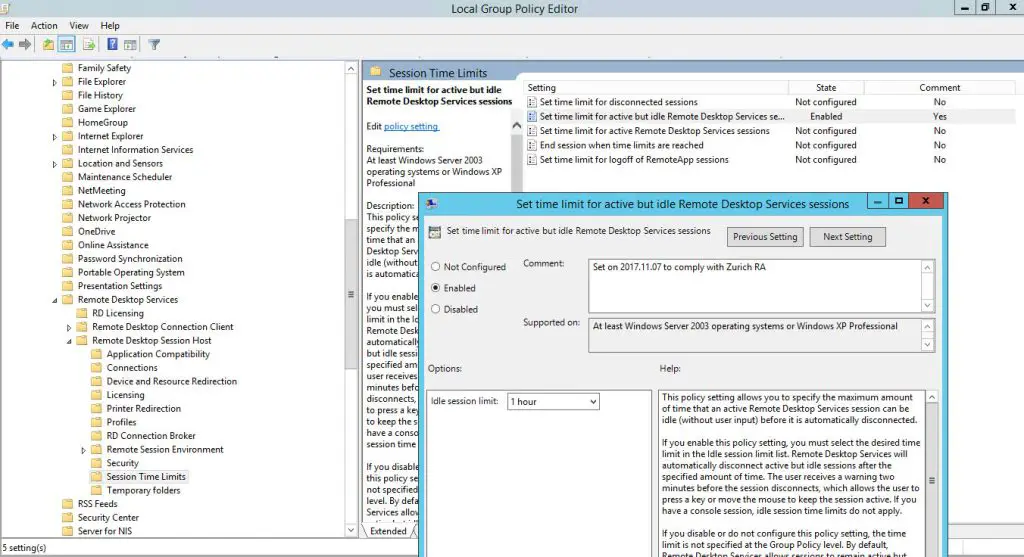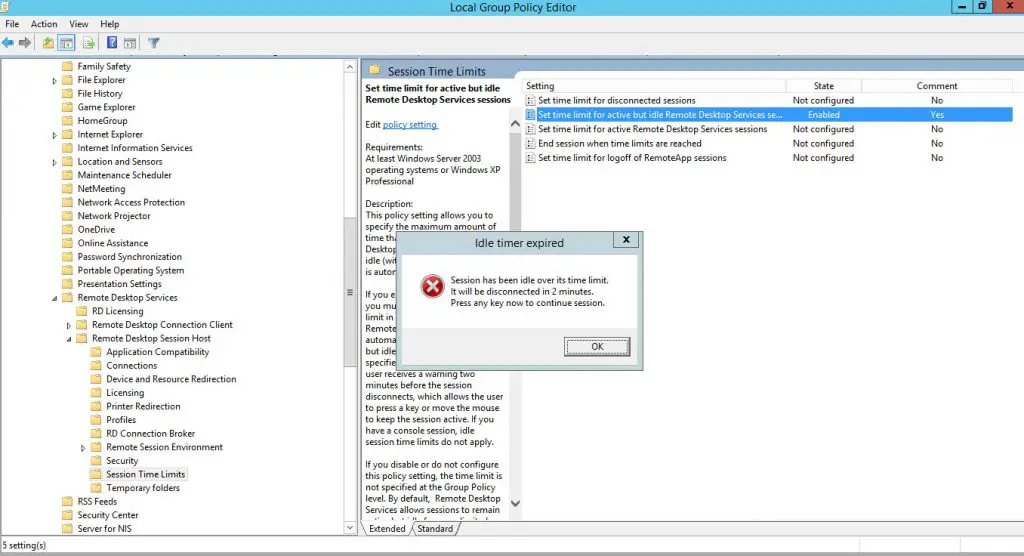That’s something we can easily expect from a decent Risk Assessment questionnaire. Those who want to PASS this – assuming they’re using Windows-based server machines – will need to adjust the behaviour of the Remote Desktop Session Host, which features no given timeout by default.
To do that, perform the following tasks:
- Open a command-prompt and type gpedit.msc to launch the Local Group Policy Editor snap-in.
- In the left panel, expand the Computer Configuration node or the User Configuration node, depending if you want to change the RDS behaviour on system-scope (recommended for this scenario) or on users-scope (see below for the differences).
- Navigate to Administrative Templates > Windows Components > Remote Desktop Services > Remote Desktop Session Host > Session Time Limits.
- In the right panel, double-click the Set time limit for active but idle Remote Desktop Services sessions policy: in the modal window that will appear, activate it by switching the radio button from Not configured to Enabled, then set the desired amount of time in the drop-down list right below.
This is the first one of them, in which we’ll be talking about setting up a Remote Desktop Session Time Limit for active, yet idle connections in Windows Server 2012.
That’s something we can easily expect from a decent Risk Assessment questionnaire. Those who want to PASS this – assuming they’re using Windows-based server machines – will need to adjust the behaviour of the Remote Desktop Session Host, which features no given timeout by default.To do that, perform the following tasks:
- Open a command-prompt and type gpedit.msc to launch the Local Group Policy Editor snap-in.
- In the left panel, expand the Computer Configuration node or the User Configuration node, depending if you want to change the RDS behaviour on system-scope (recommended for this scenario) or on users-scope (see below for the differences).
- Navigate to Administrative Templates > Windows Components > Remote Desktop Services > Remote Desktop Session Host > Session Time Limits.
- In the right panel, double-click the Set time limit for active but idle Remote Desktop Services sessions policy: in the modal window that will appear, activate it by switching the radio button from Not configured to Enabled, then set the desired amount of time in the drop-down list right below.
That’s it! As soon as you click Apply, the new settings will be saved: from now on, all newly-initialized Remote Desktop session will be disconnected after the given amount of time. On top of that, the remote connected users will also have the chance to see the following alert popup, so that they will know what’s about to happen and they’ll have the chance to prevent the disconnection – in case they’re still there:





0 Comments